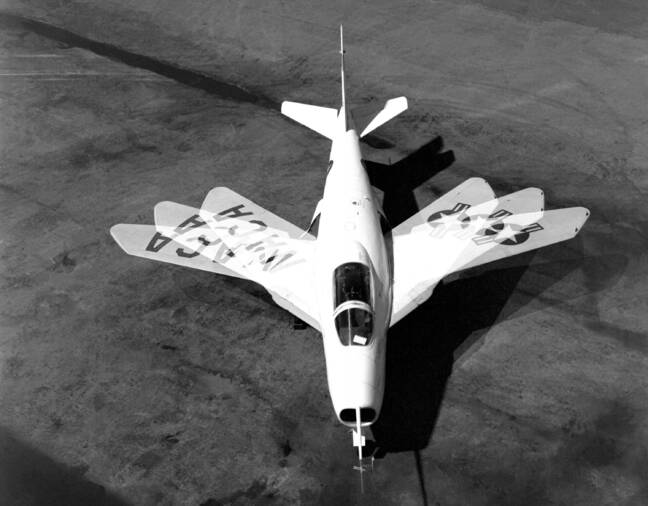NASA to tear the wings off plane in the name of sustainability
They'll be replaced with longer, thinner wings supported by a truss
NASA has named the MD-90 jetliner it will rebuild with a radical new type of wing support in an effort to develop technology that reduces CO2 emissions.
The MD-90, like the 737s and A320s that dominate the world's commercial airline fleets, is a single-aisle twinjet. NASA thinks planes of that sort can be made more efficient with a "transonic truss-braced wing configuration". It's therefore acquired an old MD-90, and on Tuesday named it the X-66A.
The plane is in for a rough time. NASA plans to shorten the fuselage and attach "long, thin wings with engines mounted underneath and a set of aerodynamic trusses for support."
Those trusses look something like this:
"The X-66A will help shape the future of aviation, a new era where aircraft are greener, cleaner, and quieter, and create new possibilities for the flying public and American industry alike," said NASA administrator Bill Nelson.
"To reach our goal of net-zero aviation emissions by 2050, we need transformative aircraft concepts like the ones we're flying on the X-66A," said Bob Pearce, associate administrator for NASA's aeronautics research mission directorate.
- NASA experts looked through 800 UFO sightings and found essentially nothing
- Boeing discovers Dreamliner defect, delivery delay decided
- Boeing takes flight in sustainability battle with carbon data cruncher
- NASA's electric plane tech is coming in for a late, bumpy landing
It's not immediately clear what sort of new engines or fuel the X-66A will employ – though traditional aviation fuel is likely given the modest 30 percent target in emissions reductions.
X-planing history
The X-plane program has been around since the 1940s, when NASA's predecessor – the National Advisory Committee for Aeronautics – started its first experimental aircraft program together with the US Air Force and Navy.
The X-plane program brought us the first aircraft to break the sound barrier, the first aircraft with variable wing sweep angle, and plenty of hypersonic flight tests.
Recent X-planes have included the X-59 quiet supersonic aircraft, and the X-48B blended wing.
X-66A joins another sustainability-focused X-plane, the all-electric X-57 "Maxwell" that has gone way over schedule and budget.
With luck, things at the SFD program will go more smoothly and the X-66A can be "the next in a long line of experimental aircraft used to validate breakthrough designs" in aircraft efficiency and sustainability, said Boeing CTO Todd Citron.
Citron is probably hoping that will be the case, because Boeing is on the hook for most of the funding for the SFD program. While NASA has committed to contributing $425 million over the next seven years, Boeing has committed to around $725 million for the program, NASA said.
On top of that, Boeing could use a win in its relationship with NASA right about now. ®


 Biting the hand that feeds IT
Biting the hand that feeds IT